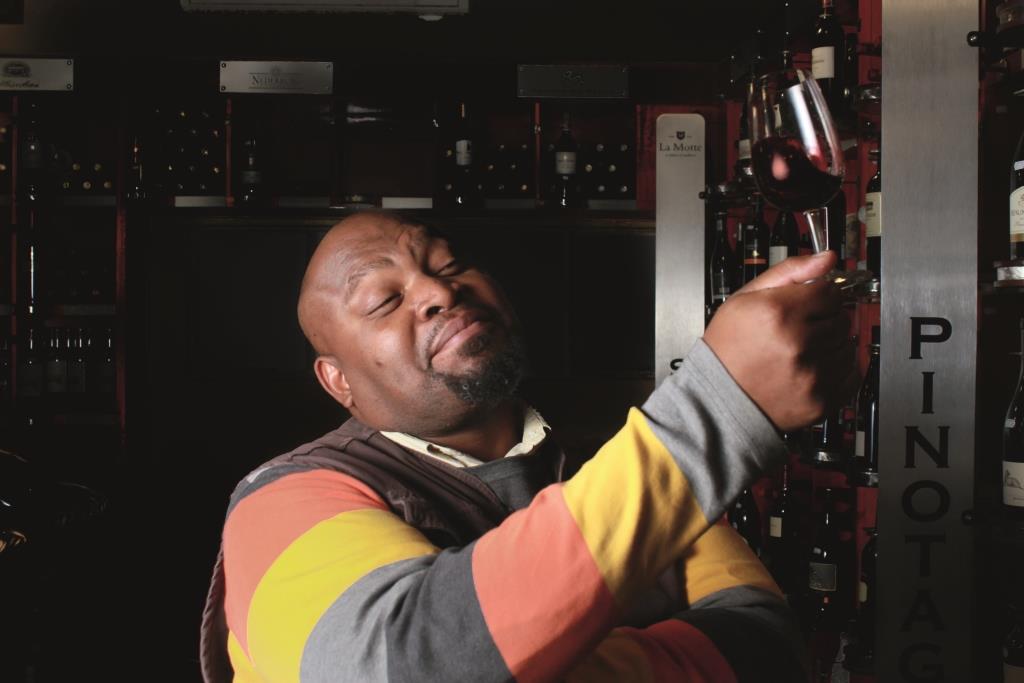Portmanteau–a blend of two or more, and that is exactly what Pinotage is. Not a hybrid like many of us in the industry thought, for a hybrid is a blend of two species (vitis species). Pinotage is Pinor Noir put together with Hermitage, also known as Cinsaut.
Therefore, Pino + Hermitage = Pinotage (vitis vinifera). Easy enough.

Pinotage was invented by one Prof Izak Perold in 1925 in South Africa. As many great stories go, it was a creation born of blind chance. Perold tested the new grape and left it to grow in his test garden. One day his garden was uprooted, but the grape was saved and became the father and mother of the Pinotage that’s grown and vinified on many wine farms in South Africa’s Western Cape. People drink Pinotage on all continents.
Pinotage is produced in many styles, unwooded so it shows a juicy, easy drinking quality, or from older vines, which are then matured in oak to make a serious wine. The wine has not always enjoyed much favor, especially among foreign wine critics, who found it flabby–one even commented that it tasted like rusty nails. I tend to agree when I find Pinotage being made in a heavy, over-extracted style. Pinor Noir is a very delicate and difficult grape to work with, bearing in mind that Pinotage is a blend of Pinor Noir and Hermitage. Wine makers, for a long time, would merely bash the grape in new oak and pray for a lovely balanced wine.
Loading...
The Pinotage producers began paying attention to the critics and wine drinkers and adjusted their wine-making skills. South African Sebastian Beaumont, in Botriver, makes his Pinotage in big open cement tanks and says that this method allows the wine to breathe, making for a smooth and richly textured wine.
Mocha Choca is also another big craze in Pinotage making. Wooden staves are put into the wine while it’s maturing and the end result is wine that tastes like chocolate, mocha and coffee .
Pinotage is not limited to table wines. It can also be used for sparkling and dessert wine. The first house to produce sparkling wines in South Africa, Simonsig, has made lovely Pinotage-based bubbly, as have Moreson and Beyerskloof, to name but a few.
Now for my favorite part: Pinotage and food. Pinotage has mostly strong hints of banana and meaty notes, and of course, chocolate. It is a wine that is very flexible and can be enjoyed by a multitude of tastebuds, depending on the style. The foods that go well with Pinotage are spicy and salty, so many light curries will work well, as will grilled fish (snoek) with a spicy sauce and salt.
This month, I have chosen a favorite home-grown dish to pair with Pinotage–bobotie.
Bobotie is a meat based dish with lots of spices like masala, turmeric and cumin. There are also cloves and pepper, and I would add a little chilli for some fire in the final taste. The dish is baked in the oven after all the ingredients have been mixed with white bread as the crust. The texture and flavor of the dish is savory, so the choice of Pinotage should be the same. A medium-bodied, matured wine from regions like Paarl and Stellenbosch should work well here. Spicy African meaty dishes will also pair nicely.
Recently, I attended the Soweto Wine Festival, a wine industry initiative aimed at introducing black people in the township to the many joys of wine appreciation. In a large hall in Soweto, people can taste South African wines in all their glory.
I went along to see if I could find any interesting Pinotages and found M Hudi (Harvester), from a farm owned by the Rangaka family-one of South Africa’s few black-owned wine farms. I was very impressed as the whole family was at the stand displaying and explaining their wines to the enthusiastic crowd. One chap who was with me at the stand said that he did not like Pinotage much, but was loving what was on offer from the Rangakas. I explained to him that wine growers have improved their techniques and what is available out there is really good stuff. Viva freedom of choice!
I was converted many years ago, as I was still learning about viticulture. It was thanks largely to Pinotage producer Beyers Trutter: he had made a Pinotage for the Cape Wine Makers Guild that I can still taste–it had a distinct nose of ox blood and a savory mouth that just sat there giving me endless joy.
Now to recap: Pinotage is a proudly South African grape that is used to make red wines of note and is prevalent mainly in landlocked wine regions like Stellenbosch and Paarl.
I watched a South African movie the other day: Paradise Stop, with Kenneth Nkosi. In the film there is a tender scene where two lovers are sharing a Pinotage made by my main man Beyers Trutter–the Diesel Pinotage from Beyerskloof.
If Pinotage be the food of love, pour on.
Loading...
